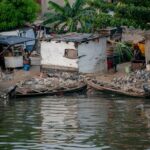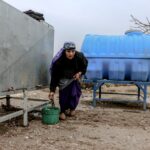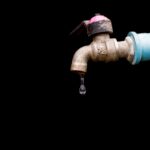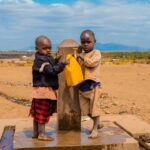Water Security: A Multifaceted Challenge
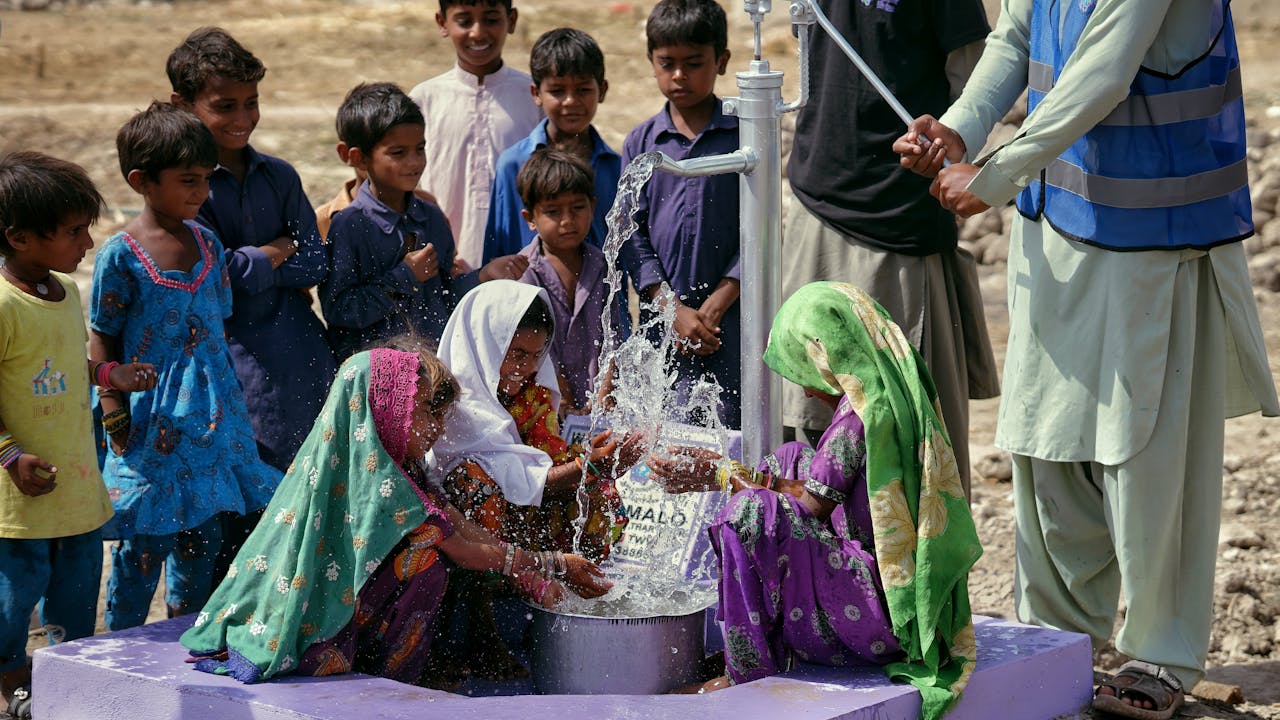
Water security is about making sure people have enough clean water for their daily needs while protecting water sources for the future. It’s not just about having water; it’s about ensuring that everyone, everywhere, has access to safe and reliable water for drinking, farming, and keeping the environment healthy.
As the world faces challenges like climate change, population growth, and pollution, water security becomes even more critical. These problems affect how much water is available and whether it is safe to use. Without action, the lack of water can cause bigger issues, such as health crises, food shortages, and conflicts over shared water sources.
Understanding the different challenges linked to water security is the first step toward finding solutions that work for both people and the planet.
Environmental Challenges to Water Security
The environment plays a key role in water security. Problems like pollution, deforestation, and climate change are putting pressure on natural water sources, making it harder to ensure a steady supply of clean water.
● Pollution: Rivers, lakes, and groundwater often get polluted by industrial waste, pesticides, and untreated sewage. This makes the water unsafe to drink or use for farming. Cleaning polluted water takes time, money, and resources, leaving many communities with no other options.
● Deforestation and Land Use: Cutting down trees and clearing land for farming or construction disrupts the natural water cycle. Trees and forests help store and filter water. When they are destroyed, rainwater is less likely to soak into the ground, causing floods and reducing the amount of groundwater available during dry seasons.
● Climate Change: Global warming is changing rainfall patterns, making some places experience severe droughts while others face heavy floods. These extreme weather events harm water supplies, leaving communities struggling to adapt.
Technological and Infrastructure Solutions
Technology and strong infrastructure are vital for solving water security problems. Modern systems can improve how water is collected, stored, treated, and distributed, especially in areas where resources are limited.
● Improved Water Treatment: Advanced filtration systems and eco-friendly water treatment plants can clean polluted water, making it safe for drinking and other uses. Solar-powered water purifiers, for example, work well in remote areas without reliable electricity.
● Smart Irrigation Systems: Agriculture uses most of the world’s freshwater, but much of it is wasted. Technologies like drip irrigation ensure that crops get just the right amount of water, saving resources and boosting food production.
● Reliable Infrastructure: Many communities lack proper pipelines, wells, or storage facilities, leading to wasted water and unequal access. Building and maintaining water systems that are resilient to climate change can help ensure a stable supply for everyone.
When these solutions are invested in, water scarcity can be addressed while ensuring that the systems we build are both efficient and sustainable.
Economic Challenges of Water Security
Water is essential for economies to grow and thrive. Farming, factories, and energy production all depend on having enough water. However, when water is scarce or poorly managed, economies can suffer, especially in developing regions.
● Agriculture and Food Production: Agriculture uses about 70% of the world’s freshwater. Without enough water, crops fail, food prices go up, and farmers lose their incomes. In areas like sub-Saharan Africa, water shortages hurt small-scale farmers the most, making hunger worse.
● Factories and Jobs: Many industries need water to produce goods, like clothes and paper. When there isn’t enough water, production stops, leading to lost income and fewer jobs. Industries in areas with water scarcity often face higher costs or shutdowns.
● Energy Production: Water plays a big role in producing energy, especially in hydropower and power plants. When water is scarce, it disrupts energy supplies, which can affect businesses, homes, and entire economies.
Water and Public Health
Clean water is vital for good health. It helps prevent diseases, supports hygiene, and improves quality of life for everyone.
● Fewer Diseases: Dirty water can cause serious illnesses like cholera, diarrhea, and typhoid. These diseases kill thousands of people every year, especially in places where clean water is hard to find. When people have safe water, they are much less likely to get sick.
● Health for Women and Children: Women and children often bear the burden of water insecurity. Pregnant women are at risk of infections when they use dirty water. Young children, especially under five, are more likely to die from waterborne diseases. Providing clean water improves their health and survival.
● Better Hygiene: Clean water is necessary for basic hygiene, like washing hands and managing menstruation. Without it, people are more likely to get infections. Access to clean water helps families stay healthy and maintain dignity, especially in poorer areas.
Social and Political Issues of Water Security
Water security is not just about the environment or the economy – it’s also about fairness and cooperation. Unequal access to water often worsens social and political tensions.
● Unequal Access: Not everyone has the same access to water. Rural areas and poorer communities often lack safe water compared to cities or wealthier areas. Rapid urban growth also puts pressure on water systems, creating more inequalities in cities.
● Conflict or Cooperation: Many countries share rivers and lakes, which can lead to disagreements over how to use the water. For example, countries around the Nile River have had disputes about water rights. However, shared water can also bring people together through agreements and partnerships.
● Local Leadership: Empowering local communities to manage water fairly can solve many problems. When communities are involved in protecting water sources and deciding how to use them, the results are often more fair and sustainable.
Social and Economic Impacts of Water Insecurity
Water insecurity doesn’t just affect access to water – it has a ripple effect on entire communities. It keeps communities stuck in a cycle of poverty. When people can’t rely on clean, available water, it creates challenges for education, jobs, and public health.
● Health Issues: Without safe water, diseases like cholera and dysentery become common. In areas with water shortages, people often drink from unsafe sources, leading to widespread illness and high medical costs.
● Impact on Education: 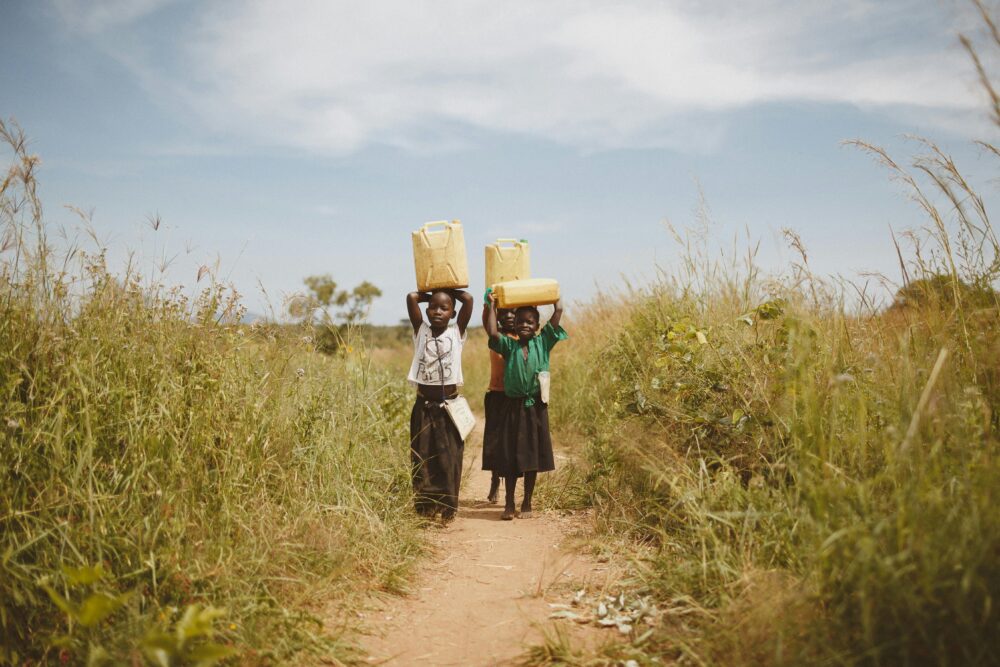 In many places, children, especially girls, spend hours every day collecting water. This time could be spent in school, but the lack of nearby water limits their opportunities for education and future employment.
In many places, children, especially girls, spend hours every day collecting water. This time could be spent in school, but the lack of nearby water limits their opportunities for education and future employment.
● Economic Losses: Businesses and industries also suffer when water is scarce. Factories that need water for production may reduce operations or shut down completely, leading to job losses. For farmers, unreliable water supplies can result in failed crops and financial hardships.
The Role of Governments and Policies in Water Security
Governments play a major role in addressing water security challenges by creating policies that protect resources and ensure fair distribution. Strong leadership and planning can make a big difference.
● Water Regulations: Governments can set rules to prevent overuse of water and reduce pollution. For example, industries might be required to treat their waste before releasing it into rivers or lakes.
● Investments in Infrastructure: Building dams, reservoirs, and water treatment plants requires funding and coordination. Governments need to prioritize these projects to ensure water reaches every household, farm, and business.
● Cross-Border Agreements: Many rivers and water sources flow across national borders. Sharing these resources fairly can prevent conflicts and promote cooperation. Treaties and agreements between countries ensure that everyone gets their fair share without harming the environment.
Education and Awareness for Sustainable Water Use
Educating people about the value of water and how to use it wisely is an essential part of water security. Raising awareness empowers people to take action. When individuals and communities understand the issues, they can take steps to conserve water and protect resources.
● Water Conservation Practices: Teaching simple habits like turning off taps, fixing leaks, or reusing water can make a big difference. Schools and community programs can spread these messages effectively.
● Community Involvement: Local groups can play a role in maintaining water sources by organizing clean-up drives, monitoring pollution, or managing water distribution systems.
● Media Campaigns: Governments and organizations can use TV, radio, and social media to educate larger audiences about the importance of saving water and protecting natural resources.
Partnerships and Global Cooperation
Solving water security issues often requires collaboration. Governments, non-profits, businesses, and communities must work together to develop long-term solutions.
● Public-Private Partnerships: Companies can invest in water projects, like building treatment plants or installing pipelines, while governments ensure fair access and regulation.
● Global Initiatives: International organizations, such as the United Nations, play a key role in addressing global water challenges. Programs like Sustainable Development Goal 6 aim to ensure clean water for everyone by 2030.
● Local Partnerships: In many communities, nonprofits and grassroots organizations bring people together to improve water access. These groups often work on small but impactful projects, like digging wells or installing rainwater collection systems.
Through partnerships, resources and expertise can be shared, making water security a collective effort. Collaboration also ensures that solutions are inclusive, benefiting even the most vulnerable populations.
Conclusion
Water security is not a single issue but a web of interconnected challenges that impact health, education, economies, and the environment. Addressing these challenges requires a united effort, combining innovative technology, sustainable policies, and active participation from individuals, communities, and governments.
By investing in infrastructure, educating people on sustainable practices, and fostering global and local partnerships, we can move closer to a world where water is accessible to everyone. This isn’t just about survival; it’s about giving communities the chance to thrive, breaking cycles of poverty, and preserving natural ecosystems for generations to come.
Aqua Maya is one organization making significant impact in this regard. Through focused initiatives, Aqua Maya provides clean water to underserved communities in West Africa, proving that even what we consider to be small-scale actions can contribute to global water security. By supporting such efforts and committing to sustainable water use in our daily lives, we can collectively work toward a future where clean water is a basic reality for all.
Water security is more than a challenge; it is an opportunity to build resilience, equality, and a healthier planet. The time to act is now.
Sources
1. https://www.who.int/news-room/fact-sheets/detail/diarrhoeal-disease
2. https://www.weforum.org/stories/2023/02/water-security-national-security-issue/
4. https://www.un.org/sustainabledevelopment/water-and-sanitation/

